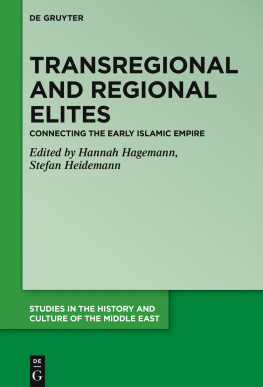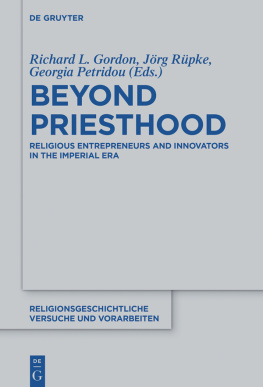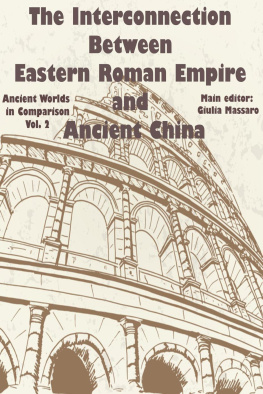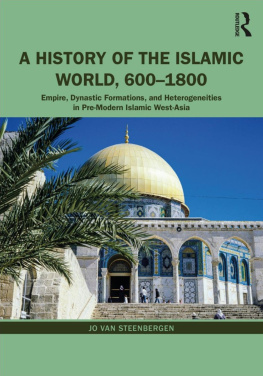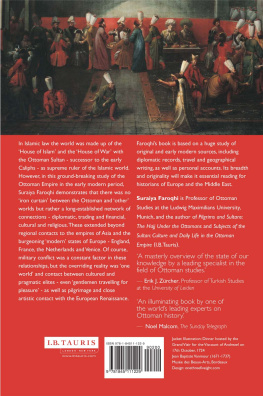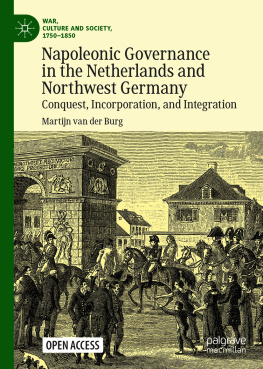Table of Contents
Guide

Transregional and Regional Elites Connecting the Early Islamic Empire
Studies in the History and Culture of the Middle East

Edited by
Stefan Heidemann, Gottfried Hagen, Andreas Kaplony, Rudi Matthee and Kristina L. Richardson
Volume 36

Supported by:

ISBN 978-3-11-066648-9
e-ISBN (PDF) 978-3-11-066980-0
e-ISBN (EPUB) 978-3-11-066656-4
ISSN 2198-0853

This work is licensed under the Creative Commons Attribution-NonCommercial-NoDerivatives 4.0 License. For details go to
http://creativecommons.org/licenses/by-nc-nd/4.0/.
Library of Congress Control Number: 2019949235
Bibliographic information published by the Deutsche Nationalbibliothek
The Deutsche Nationalbibliothek lists this publication in the Deutsche Nationalbibliografie; detailed bibliographic data are available in the internet at http://dnb.dnb.de.
2020 Hannah-Lena Hagemann and Stefan Heidemann,
published by Walter de Gruyter GmbH, Berlin/Boston
The book is published open access at www.degruyter.com.
www.degruyter.com
Stefan Heidemann
Introduction: Transregional and Regional Elites Connecting the Early Islamic Empire
The Project of the Early Islamic Empire at Work
Our knowledge about the working of the early Islamic Empire is still rather imbalanced. The caliphate ruled an expanse from Central Asia to North Africa for about 300 years until the 940s, creating in the process a distinct civilization and culture. Research on the early Islamic Empire, and consequently our knowledge thereof, is still dominated by the perspective of the sources. Whilst unsurprising, the tendency of researchers to rely upon the viewpoint of the major historians of the Islamic Empire has led them to adopt the same geographical biases that these historians maintained. The most important of these is al-abar (d. 923), who provides us with a monumental history of the world and the Islamic Empire until the time when its power was waning. As informative as al-abar is, even about the far regions of the empire, his primary concern is the developments of its political and economic center, Greater Mesopotamia. This region, which comprised important metropolises such as al-Kfa, al-Bara, Wsi, Baghdd, Smarr, and al-Mawil, was tightly controlled and taxed. It also served as the power base of the Sasanians, an imperial tradition on which the Islamic Empire subsequently built. Historians have often transposed the information provided by al-abar and others regarding this economic, agricultural, and political heartland to the empire as a whole. It became the governing paradigm for the narrative of the empire.
The questioning of this assumption was the starting point of the European Research Council project The Early Islamic Empire at Work , which ran from April 2014 to September 2019. In investigating how the vast and diverse Islamic Empire was governed, the project critiques the reigning top-down conceptualization, according to which the caliph and his court constitute the center from which imperial power, politics, and indeed history were transmitted. Instead, it posited a View from the Regions Toward the Center , which, inspired by scholars of European Medieval Studies such as Peter Thorau connects regional histories to find coherence between imperial dynastic history and regional events. Five key regions were selected for the project, based on the diversity of their people, languages, religions and cultures, and history. These were Ifrqiya, al-Shm (Syria), the Jazra (Northern Mesopotamia), Frs, and Khursn (eastern Iran). Through a combination of in-depth regional analyses and interregional comparisons, the project thus sought to explain the working of the early Islamic Empire from a regional perspective.
The Question of Elites
A key factor in understanding governance with regard to the early Islamic Empire are the various elites who were essential for the processes of regional integration and imperial cohesion. When acts of imperial governance are contextualized within the stream of regional and transregional events, against a backdrop of the movements of elites and individuals, the functioning of the empire within its legal and institutional framework becomes apparent, embedded in a network of reciprocal relations, dependencies, and permeations. These layers of imperial government, regional, and transregional activity, can then be synthesized into a comprehensive imperial history.
Relations between an empire and its subjected regions are never unilateral. No pre-modern empire could be ruled through the threat of military force alone. Significant sections of the provincial elites often consented to being part of an empire because of the advantages that it could provide, such as reliable communication and transportation lines, and an enforceable common legal framework. The regional elites were usually culturally, historically, socially, and economically rooted in their regions. Those who joined the empires ranks were positioned between its demand for taxes and loyalty on the one hand, and the agricultural workforce, comprising the demographic majority in pre-modern societies, on the other. In every empire, the regions were burdened with taxes and other contributions to the maintenance of the central administration, its capital, courts, and military, and the privileges of the upper echelons of the regions and the imperial center. While the Islamic Empire seems to have been at the same time both bureaucratic, at least in its fiscal administration, and informal, meaning without any discernable formal Byzantine hierarchy, the diversity of the regions and its elites entailed variations of governance, almost as a pattern. Practices differed from region to region, but so too did the resulting interactions with the elites in these regions.
The question of who constituted these elites, and the need to forge an operational terminology strong enough to analyze their identity and function, became a driving question at an early stage in the project. Rather than focusing on institutions, we pursued an actor-driven approach to understand the role played by persons (whether groups or individuals) and their networks in the Islamic Empire.
The elites we were most interested in are functional elites. This category includes mainly political and economic elites who were crucial to the empires stability. This still vague definition includes all administrative, and military elites, but also judicial elites. For questions of governance, the economic elites mainly comprise the landholding elites. Although this group also includes the leaders of urban artisans and merchants, the sqa and bay a , and the long-distance merchants ( tujjr ), it was the landholding elites, a group which was often closely connected with the administration and the fisc, that were more relevant for our project. Old regional elites were often marked by their possession of land, and the new elites of the empire were investing their gains in landholding.

